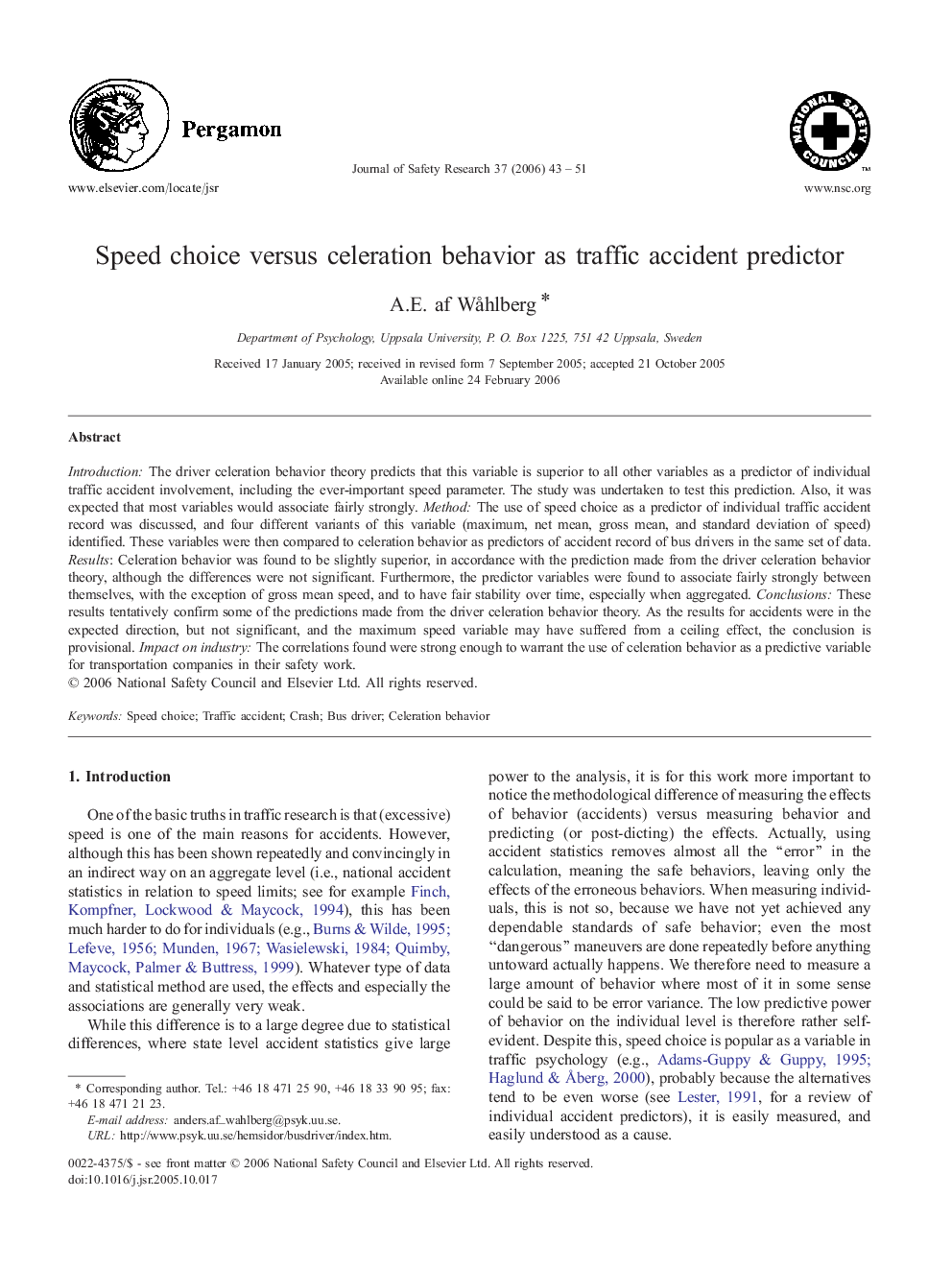| Article ID | Journal | Published Year | Pages | File Type |
|---|---|---|---|---|
| 587932 | Journal of Safety Research | 2006 | 9 Pages |
Introduction: The driver celeration behavior theory predicts that this variable is superior to all other variables as a predictor of individual traffic accident involvement, including the ever-important speed parameter. The study was undertaken to test this prediction. Also, it was expected that most variables would associate fairly strongly. Method: The use of speed choice as a predictor of individual traffic accident record was discussed, and four different variants of this variable (maximum, net mean, gross mean, and standard deviation of speed) identified. These variables were then compared to celeration behavior as predictors of accident record of bus drivers in the same set of data. Results: Celeration behavior was found to be slightly superior, in accordance with the prediction made from the driver celeration behavior theory, although the differences were not significant. Furthermore, the predictor variables were found to associate fairly strongly between themselves, with the exception of gross mean speed, and to have fair stability over time, especially when aggregated. Conclusions: These results tentatively confirm some of the predictions made from the driver celeration behavior theory. As the results for accidents were in the expected direction, but not significant, and the maximum speed variable may have suffered from a ceiling effect, the conclusion is provisional. Impact on industry: The correlations found were strong enough to warrant the use of celeration behavior as a predictive variable for transportation companies in their safety work.
